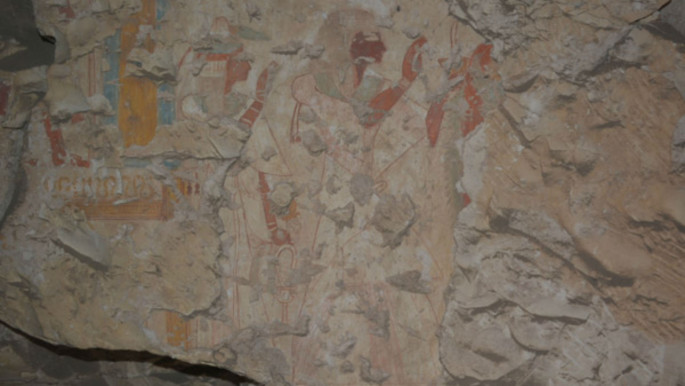Japanese archaeologists unearth Ramesside-era tomb in Egypt's Luxor
A team of Japanese archaeologists has unearthed a private tomb in the Theban necropolis of Egypt's southern city of Luxor, an antiquities ministry official has said.
According to Mahmoud Afifi, who heads the ministry's ancient Egypt department, the beautifully decorated tomb in the Khoja area on the west bank of the Nile likely dates to the Ramesside period, named after the famous Ramses Kings of the 19th and 20th Dynasties of the New Kingdom.
Early inspection of the tomb suggests that it belonged to a royal scribe named Khonsu, said Afifi.
Jiro Kondo, the head of the Japanese mission, told Egyptian website Ahram Online that the tomb was discovered while excavators were cleaning the area to the east of the forecourt of the tomb of Userhat, a senior official under King Amenhotep III.
The team also stumbled upon a hole hewn connected to the south wall of the transverse hall of the previously unknown tomb of Khonsu, he added.
The tomb is built on a T-shape on an east-west axis, with the main entrance, currently covered in debris, facing the east.
Kondo explains that on the north wall of the entrance doorway, a scene shows the solar boat of the god Ra-Atum being worshipped by four baboons in a pose of adoration.
 |
| The new discovery shows that there may be other cemeteries in the same area of senior officials from the New Kingdom era [Waseda University] |
On the adjacent wall, hieroglyphic texts are inscribed vertically describing Khonsu as a "true renowned scribe".
The southern part of the eastern wall in the transverse hall shows Khonsu and his wife worshipping the gods Osiris and Isis in a kiosk, behind which is a depiction of the two ram-headed deity, likely Khnum or Khnum-Re.
The upper register of the northern part of the tomb features carved seated figures of Osiris and Isis, though the upper parts of their bodies are broken.
On the lower register, a portion of the paintings shows the followers of the tomb owners.
"Regretfully, most of the wall paintings on the western wall of the transverse hall are no longer there," said Kondo.
The new discovery shows that there may be other cemeteries in the same area, yet to be discoved, of senior officials from the New Kingdom era, Kondo said.
He added that more scenes would likely be discovered in the inner chamber of the tomb, currently still covered by large stone blocks.![Ancient tomb discovered in Luxor [Waseda University] Ancient tomb discovered in Luxor [Waseda University]](/sites/default/files/styles/image_345x195/public/media/images/9EE124B8-C6A9-4E85-B9FB-6E4DCFF65A51.jpg?h=d1cb525d&itok=GOpo6PFz)




 Follow the Middle East's top stories in English at The New Arab on Google News
Follow the Middle East's top stories in English at The New Arab on Google News


